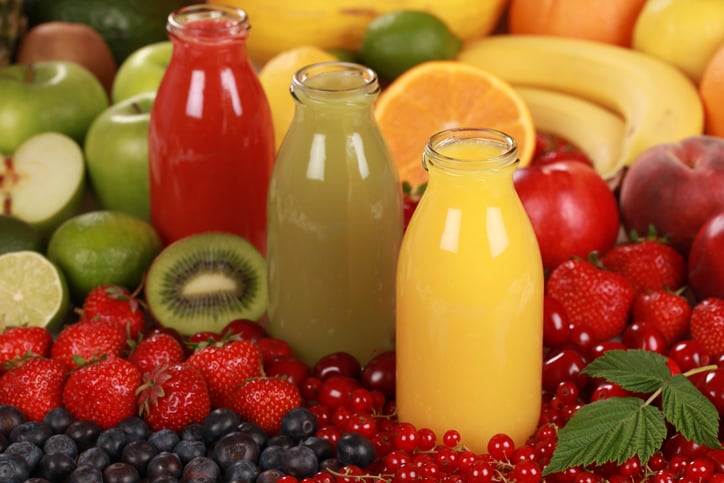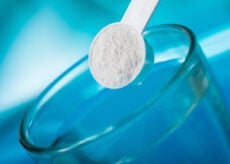4 Fruits That Make You Gain Weight (avoid at all costs)

When it comes to health, nutrition, and weight loss, there are a lot of myths and downright misinformation out there. So much, in fact, it can leave you feeling confused and frustrated—and leave me with a palm full of face.
I’m most disappointed when health professionals—especially influential, so-called “gurus”—definitively espouse their views despite any scientific evidence to support them. Even worse, many broadcast their opinions when there’s solid evidence to the contrary.
One such topic of contention is fruit.
On one hand, you have well-intentioned nutritionists who might say, “Increase your fruit and vegetable intake. You’ll notice a real difference in your weight loss.” On the other hand, you have militant “gurus” who will tell you that you HAVE to “cut out fruit” if you want to lose weight.
The truth is, they’re both wrong!1 In the case of the former, increasing fruit and vegetable intake is likely to only make a noticeable difference if you’re reducing calorie intake. That is, by displacing more energy-dense foods like substituting a piece of fruit for a pastry. Still, in my experience, when people eat more fruits and vegetables, they often feel full longer and naturally reduce overall caloric intake. In many cases, despite eating more total food.2–8
On the other hand, it’s ridiculous that the first defense for weight-management would be to cut fruit. Seriously? I can think of a laundry list of strategies we could try before going to that extreme.
My best guess is that this recommendation stems from the fact that fruit contains sugar, which has been demonized. But the sugar in fruit is naturally occurring. And fruit is also packaged with fiber, micronutrients, and an abundance of antioxidant phytonutrients. All of which have the potential to boost health and even support weight loss.
Sure, most people could benefit from limiting their intake of added sugars. Sugars, when consumed in excess, contribute to obesity, diabetes, and cardiovascular disease.9 Yet, it seems unlikely (at best) that fruit, consumed in moderation, would have anything but positive effects on an otherwise healthy body. The amount of sugar from a piece of fruit is a drop in the bucket compared to what the average person consumes daily.
That being said, one recent randomized, controlled trial evaluated the effects of restricting both fruit and calories on weight management and glycemic control in adults with type 2 diabetes. (A population that should have great concern with sugar/carb intake.) Researchers found the group that ate more fruit (at least 2 pieces per day) lost 47% more weight than the low-fruit group (i.e., no more than 1 piece per day). What’s more, both groups showed significant improvements in glycemic control—regardless of how much fruit they ate.10
There’s a dramatic difference between eating real fruit and a “food” made with fruit. It’s the latter most people could stand to limit. If, that is, they’re looking to make improvements in their health and waistline. Here are some common offenders.
4 Fruits That Make You Gain Weight
Fruit Juice
Store-bought fruit juice is not the same as fresh fruit. Fruit juice is higher in both calories and sugar and lower in fiber than its whole-fruit counterpart. For instance, a single medium-sized orange contains about 60 calories and 15 grams of carbohydrates, with 3 grams of fiber and 12 grams of sugar. An 8-ounce glass of orange juice, on the other hand, contains double the sugar, no fiber, and nearly twice as many calories. What’s more, you could down that glass of juice in less than half the time it takes to eat an orange.
Plus, the digestion of liquids is faster than solids. Drinking juice results in a much more rapid increase in blood sugar compared to whole fruit. Research also shows liquids don’t tend to be as filling as whole foods. Even when calories are identical, liquids leave people feeling hungrier and lead to eating more.11,12 While eating whole fruit increases feelings of fullness and subsequently decreases caloric intake, the same cannot be said of juices.2,13–15
In a recent systematic review, researchers confirmed consuming whole fruit led to weight loss and reduced the risk of weight gain. They also found fruit juice promotes weight gain.16 Their advice? Eat more whole fruits and replace fruit juice with plain, filtered water.
Studies have shown excess consumption of fruit juice (just 12 ounces/day is considered “excess”) is associated with higher caloric intake, weight gain, and the development of cavities.17–20 The Institute of Medicine recommends children reduce fruit juice intake to help prevent overweight and obesity. Professional health organizations including the American Academy of Pediatrics and American Heart Association (AHA) also recommend whole fruits be used as an alternative to fruit juice.21–23
If it’s important enough for our kids or grandkids, why shouldn’t we heed the same advice?
Fruit Smoothies
The other day, we were out and about, and my wife (who’s breastfeeding) had a hankering for a smoothie. In our house, we have an unwritten rule that we never want Momma to get “hangry.” In this case, time wasn’t on my side.
Against my better judgement, I offered to go into a nearby smoothie shop. I was SHOCKED to find out the smoothie my wife wanted packed OVER 1,000 calories, including 141 GRAMS of sugar. As a point of reference, that’s over 35 TEASPOONS of sugar, nearly 6 TIMES more than the AHA’s DAILY recommendation.
After I picked my jaw up off the floor, I decided I’d take my chances with fate. We drove home, and I whipped up a healthy, delicious smoothie—made with real fruit—that contained under 300 calories, 24 grams of appetite-satisfying, grass-fed protein, and under 15 grams of sugar. We all survived happily and healthier.
This is just one example, and perhaps it’s a little extreme. The take-home is most smoothie shop smoothies are packed with calories and added sugar. While they may use ingredients made with some real fruit, chances are they’re using processed fruit purees and syrups high in calories and sugar (including added sugars).
Fruit Snacks
In a recent report, researchers from the University of Connecticut Center for Food Policy and Obesity found children aged 6 – 11 saw more advertisements for fruit snacks than any other products. On average, nearly 100 times during the course of the year.24 While you might not consider packaged fruit snacks to be a healthy snack for yourself, both you and your kids might believe they’re a convenient snack for them.
If you take a look at the ingredients on a package, you’ll see ingredients like sugar, corn syrup (i.e., sugar), and fruit juice concentrate, which might be better described as sugar. So, you have sugar, added sugar, on top of more sugar.
You’re also likely to find artificial flavors and colors (e.g., Red 40), which has been linked to behavioral changes, including hyperactivity.25,26 There’s even some evidence indicating children with ADHD may show above-average sensitivity to artificial colors.27–31
Once again, a much healthier option—for you and your children—is to choose whole fruit over heavily processed, sugar-laden fruit snacks.
Fruit-Flavored yogurt
Don’t get me wrong, yogurt can be very healthy and can indeed be part of an overall healthy diet. There’s quite a bit of scientific evidence showing dairy, especially full-fat dairy, is related to less belly fat and better blood pressure, cholesterol, triglycerides, and glycemic control.32 Even more, research suggests eating dairy may enhance the results of a reduced-calorie diet.33–37
While dairy (e.g., Greek yogurt, yogurt, cottage cheese, kefir, etc.) may be a healthy option, it’s important to differentiate plain, unflavored options from fruit-flavored yogurts. Generally speaking, you’ll find about twice as much sugar in the latter. While you might think that’s naturally-occurring sugar, the truth is you’re likely to find added sugar as the second ingredient (after milk). That means there’s more added sugar than the naturally-occurring sugar from the fruit and milk.
And if you don’t find added sugar, there’s a good chance there are artificial sweeteners, which have negative effects of their own.38,39
So, when choosing dairy, it’s best to choose plain, organic versions whenever possible. If you prefer something sweet, please feel free add it in the form of whole, fresh fruit.
Why Whole Fruits Are Better
There’s a pretty significant upside to eating whole fruit. That said, regularly eating fruit won’t automatically make the numbers on the scale drop. Yet, you might find eating fruit in moderation helps you make better food choices and reduce caloric intake. This, ultimately, can help you lose fat.







